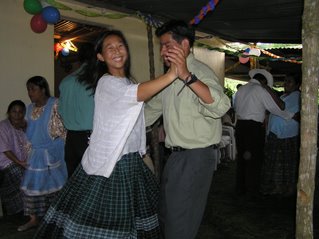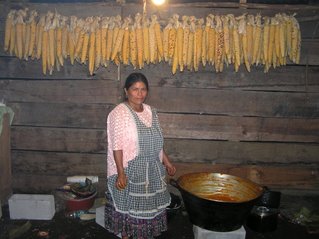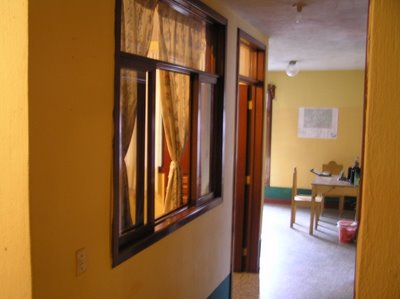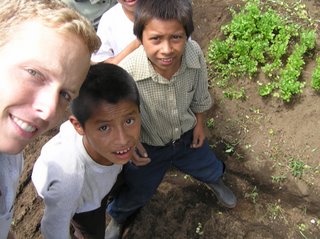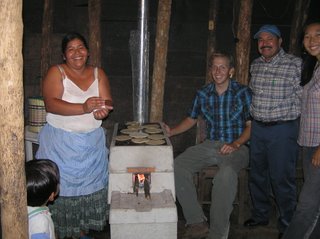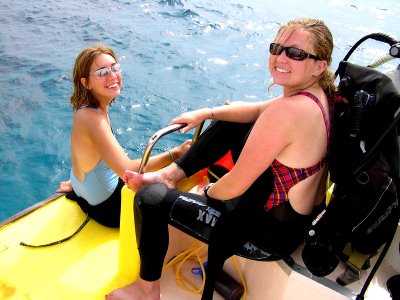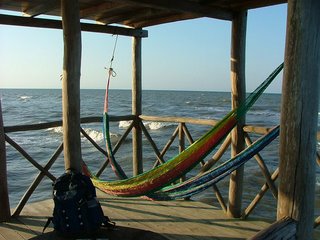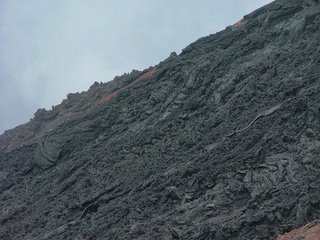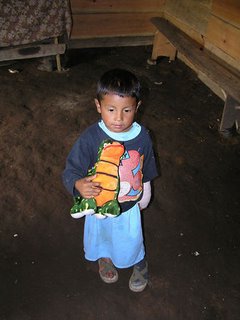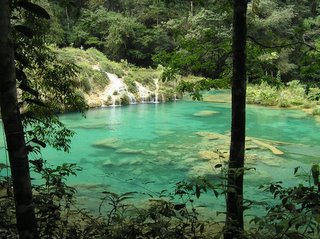 Beyond the family gardening, I’m trying to get some projects organized with the agricultural committee of the cooperative. A couple of weeks ago, I took them out to the farm of a Mennonite family that’s working in the town next to the cooperative. It’s basically a huge school garden that they’ve been working on for the past few years. It’s pretty advanced, so I wanted some coop people to see it in order to generate some ideas. So far, I’ve got them sold on using earthworms to make organic fertilizer as well as making guisquileros. The worm-composting consists of making big box filled with weeds and coffee pulp, throwing in a bunch of earth worms and waiting three months for the worms to work the mix into fertilizer. The güisquil is a type of squash that grows wild here. A güisquilero is a set of vine poles that you can set up so that the squash grows above the ground and thus leaves much more fruit than it would in the wild. At the moment, we’ve got this built and the worm box is pending, so we’ll see how that goes. I also showed them a rabbit project that people got interested in, but that’ll have to wait.
Beyond the family gardening, I’m trying to get some projects organized with the agricultural committee of the cooperative. A couple of weeks ago, I took them out to the farm of a Mennonite family that’s working in the town next to the cooperative. It’s basically a huge school garden that they’ve been working on for the past few years. It’s pretty advanced, so I wanted some coop people to see it in order to generate some ideas. So far, I’ve got them sold on using earthworms to make organic fertilizer as well as making guisquileros. The worm-composting consists of making big box filled with weeds and coffee pulp, throwing in a bunch of earth worms and waiting three months for the worms to work the mix into fertilizer. The güisquil is a type of squash that grows wild here. A güisquilero is a set of vine poles that you can set up so that the squash grows above the ground and thus leaves much more fruit than it would in the wild. At the moment, we’ve got this built and the worm box is pending, so we’ll see how that goes. I also showed them a rabbit project that people got interested in, but that’ll have to wait.
 Besides work, I’ve been going to a graduation and wedding parties that have been a blast. A Q’eqchi party usually lasts all day and includes heaps of traditional food and lots of Marimba dancing. On the whole, these parties are pretty amazing. Throwing a party is a huge investment for a family that usually involves somewhere around 50 chickens, a cow and hiring a marimba band. Moreover, they usually invite the whole community. I went to a graduation party yesterday where I had seen women preparing the food two days in advance.
Besides work, I’ve been going to a graduation and wedding parties that have been a blast. A Q’eqchi party usually lasts all day and includes heaps of traditional food and lots of Marimba dancing. On the whole, these parties are pretty amazing. Throwing a party is a huge investment for a family that usually involves somewhere around 50 chickens, a cow and hiring a marimba band. Moreover, they usually invite the whole community. I went to a graduation party yesterday where I had seen women preparing the food two days in advance.
At these parties, the deal is that you show up with a gift, salute the host and then eat an enormous meal. The food is always yu, which is boiled meat with a sauce made of corn meal, tree tomatoes and lots of oil. With the dish you always get a ton of tortillas and tamales as well as a separate bowl of soup. At first, I thought the soup was just salty broth with tomatoes. However, I was in the kitchen yesterday and learned it was in fact turkey blood.
After eating, you hang around and dance Marimba for hours. At first, I was totally shy about the dancing as I wasn’t sure about who I was allowed to dance with. I could just see myself asking someone’s girlfriend and getting thrown out of the party. Luckily, the norm is that you dance as much as you can with anyone. As such, I end up dancing with girls I teach to 70 year old grandmothers. By the end of it all, I’m totally exhuated as a marimba song can go on for over 20 minutes. For me, these are the events where I just realize how strange my life is here. I could have never imagined myself bouncing around a party way out in a Q’eqchi community and feeling totally comfortable and accepted, but here I am.
The only other major news to report was the Shakira concert I went to last week in Guate and Halloween. For Halloween, Roger, Dave, Miguel and I were the probably the only people in costume in all of Coban, so it wasn’t all that crazy. However, last week’s Shakira concert was sweet.
For the moment, I´ve got a couple more weeks of work before we celebrate Thanksgiving in Coban. After that, I´m headed to the capital for my mid-service medical checkups and conference. Not too long after that, I´ll be home for Christmas. Can´t wait.

